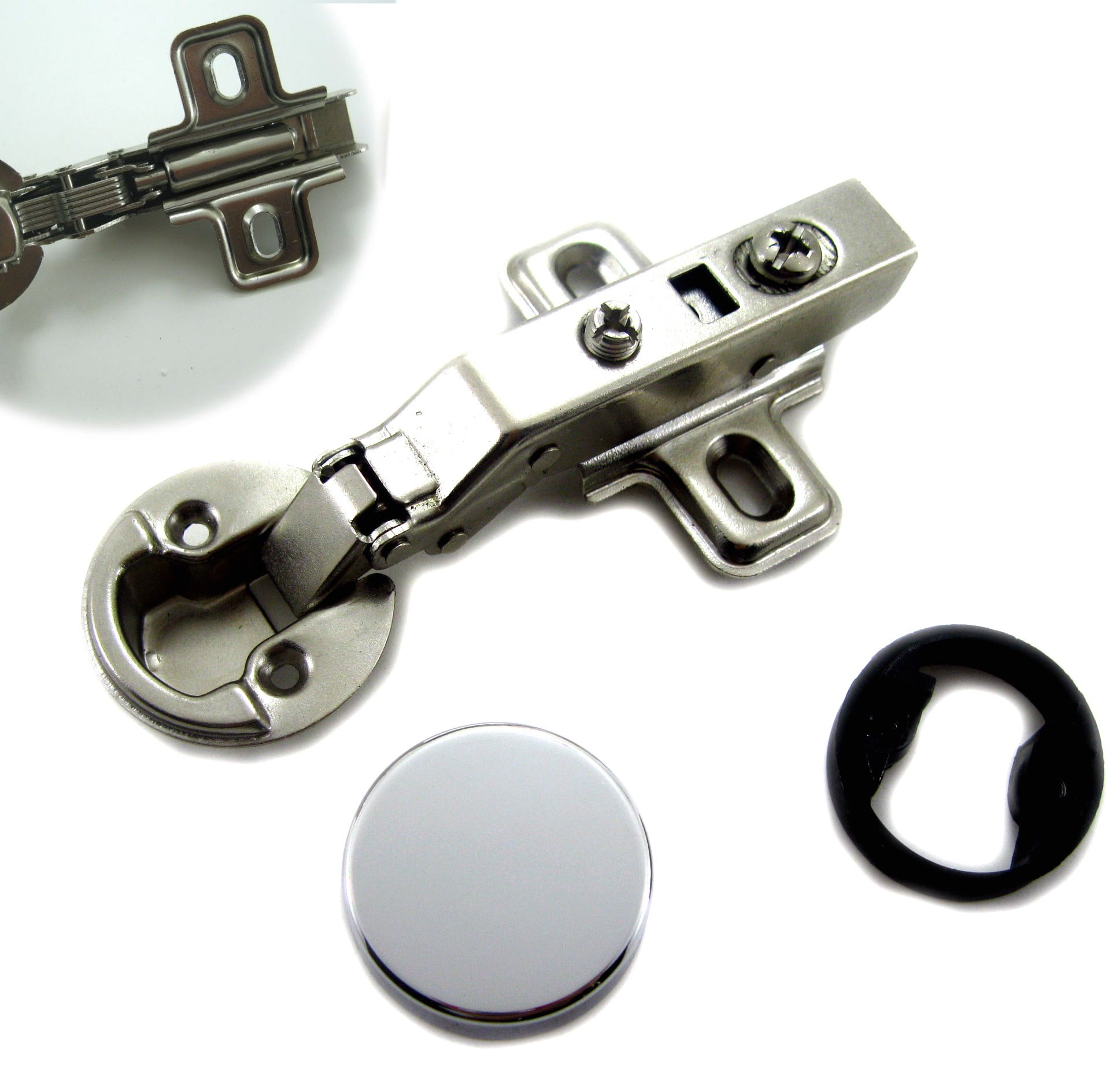Installation and Adjustment of European Hinges: European Hinges For Lipped Cabinet Doors

The precise installation and subsequent adjustment of European hinges are crucial for achieving flawlessly functioning and aesthetically pleasing cabinet doors. Proper technique ensures smooth operation and prevents premature wear on both the hinges and the cabinet itself. This section details the process, common pitfalls, and solutions for achieving optimal results.
Tools and Materials Required for Installation
Prior to commencing installation, gather all necessary tools and materials. This will streamline the process and prevent interruptions. Essential items include: a drill with appropriate drill bits (for pilot holes), a screwdriver (Phillips head is commonly required), a measuring tape, a pencil, a level, the European hinges themselves, and the appropriate screws. For more complex installations, a countersinking tool may also prove beneficial to create flush screw heads.
Step-by-Step Installation Process
- Marking the Hinge Locations: Accurately measure and mark the hinge locations on both the cabinet door and the cabinet face frame. Ensure consistent spacing between hinges, typically 3-4 inches apart, depending on door size and weight. Precise measurements are paramount for proper alignment.
- Drilling Pilot Holes: Using a drill bit slightly smaller than the diameter of the hinge screws, drill pilot holes at the marked locations on both the door and the frame. Pilot holes prevent wood splitting and ensure accurate screw placement. This step is crucial for a professional finish.
- Attaching the Hinge Cups to the Door: Align the hinge cup with the pilot holes on the door and secure it using the provided screws. Ensure the hinge cup is flush with the door surface to prevent interference with door closure. Gentle pressure and even screw tightening are key.
- Attaching the Hinge Plates to the Cabinet Frame: Similarly, attach the hinge plates to the cabinet frame, aligning them with the pilot holes and securing them with screws. Ensure the plates are level and firmly attached to the frame. Use the level to verify proper alignment.
- Hanging the Door: Carefully hang the door onto the cabinet frame, ensuring the hinge cups are properly seated within the hinge plates. The door should now be attached and functional.
Common Installation Problems and Solutions
Several issues may arise during the installation process. Addressing these proactively ensures a smooth outcome.
- Door Gaps: Uneven gaps between the door and the frame indicate improper hinge placement or adjustment. Solutions include re-checking measurements and adjusting the hinge screws to fine-tune the alignment.
- Door Binding: A binding door suggests interference from the hinge or other components. Solutions involve checking for obstructions and adjusting the hinge screws to alleviate pressure points.
- Loose Hinges: Loose hinges indicate insufficient screw tightening or improper pilot hole depth. Solutions involve re-tightening screws or redrilling pilot holes if necessary.
Adjusting European Hinges for Perfect Door Alignment, European hinges for lipped cabinet doors
Visual Guide: Imagine a three-dimensional coordinate system centered on the hinge. The hinge itself is the origin (0,0,0). The X-axis controls the horizontal alignment (left/right), the Y-axis controls the vertical alignment (up/down), and the Z-axis controls the depth alignment (in/out). Each hinge has three adjustment screws: one for each axis.
European hinges for lipped cabinet doors – X-axis Adjustment (Horizontal): Turning the screw clockwise moves the door to the right; counter-clockwise moves it to the left. This adjustment corrects horizontal misalignment. A slight turn can dramatically impact alignment.
Y-axis Adjustment (Vertical): Turning the screw clockwise moves the door upward; counter-clockwise moves it downward. This adjustment corrects vertical misalignment. Similar to the X-axis, small adjustments can significantly affect the outcome.
Z-axis Adjustment (Depth): Turning the screw clockwise pulls the door closer to the frame; counter-clockwise moves it away. This adjustment corrects gaps or overlaps. Again, small increments are advised.
By systematically adjusting each screw, one can achieve perfect alignment of the cabinet door. It is recommended to make small adjustments at a time, checking the alignment after each adjustment, to avoid over-correction.
Selection Criteria and Considerations

Selecting the appropriate European hinges for lipped cabinet doors requires careful consideration of several factors to ensure both functionality and aesthetics. The longevity and performance of the hinges directly impact the overall lifespan and usability of the cabinetry. A well-informed choice will contribute to a superior end product.
Factors Influencing Hinge Selection
The weight of the cabinet door is a primary determinant in hinge selection. Heavier doors necessitate hinges with greater load-bearing capacity to prevent sagging or premature failure. The material of the cabinet itself, whether solid wood, plywood, or medium-density fiberboard (MDF), also influences the type of hinge required. Different materials may require specific screw lengths and hinge designs for optimal installation and secure fastening. Finally, the desired aesthetic plays a crucial role; the finish and material of the hinge should complement the overall design of the cabinetry.
Hinge Durability and Longevity
The durability and longevity of European hinges are directly correlated to the quality of materials used in their construction and the precision of their manufacturing. High-quality hinges typically utilize robust materials, such as hardened steel or high-grade brass, that are resistant to wear and tear. Precise manufacturing processes ensure consistent performance and minimize the risk of mechanical failure. Investing in hinges from reputable manufacturers who adhere to stringent quality control standards is essential for long-term reliability. Lower-quality hinges, often made from less durable materials or with less precise manufacturing, may exhibit premature wear, corrosion, or failure, leading to costly replacements and potential damage to the cabinetry.
Comparison of Hinge Materials
The following table compares the properties of commonly used hinge materials:
| Material | Corrosion Resistance | Strength | Aesthetic Appeal | Cost |
|---|---|---|---|---|
| Steel | Good (with appropriate finish) | High | Versatile; can be finished in various colors | Moderate |
| Brass | Excellent | High | Classic, elegant appearance; often requires minimal finishing | High |
| Nickel | Good | Moderate | Modern, sleek appearance; requires minimal finishing | Moderate to High |
